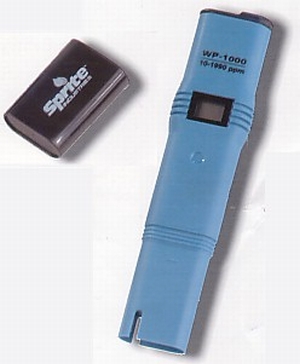How do I properly use a water tester and why do we have to test the water anyhow?

We have been supplying the above water testers to anyone that has a Statim sterilizer. The Statim works by injecting distilled water under pressure into a very small boiler. This boiler immediately turns the water into steam. Within this boiler is a small temperature sensor (thermocouple) that relays the boiler temperature to the control circuitry. If you happen to use non-distilled water the thermocouple within the boiler can get coated with calcium, lime, rust, etc. Once coated it is less acurate in its readings and can cause the boiler to burn out. To avoid this problem, we use the water tester to make absolutely sure that the water that is being poured into the reservoir is as clean as possible. Generally this is considered to be anything that contains three parts per million (ppm) total disolved solids (TDS) or less. The water tester that we provide reads 0-999 ppm TDS. Below are the steps for proper testing:
- Take gallon of water and shake it to make sure that any disolved solids that have settled on the bottom of the jug are now floating.
- Remove the black cover from the bottom of the water tester and insert the tester into the neck of the bottle submerging the base of it approximately 1 inch into the water. It may be necessary to squeeze the jug of water to get the water level to rise enough to reach the tester.
- Press and hold the “ON” button. Preferrably for at least 30 seconds to allow the water tester to adjust to water temperature. The unit uses a thermometer in combination with electrical conductivity to determine the ppm TDS.
- If the reading is 003, 002, 001, or 000 then the water is acceptable for use in the statim. If not use if for some other application within the office.
- Dry off the end of the water tester and re-cover for use next time.
So, whether you buy gallons of distilled water or make it yourself, always test every bottle prior to pouring